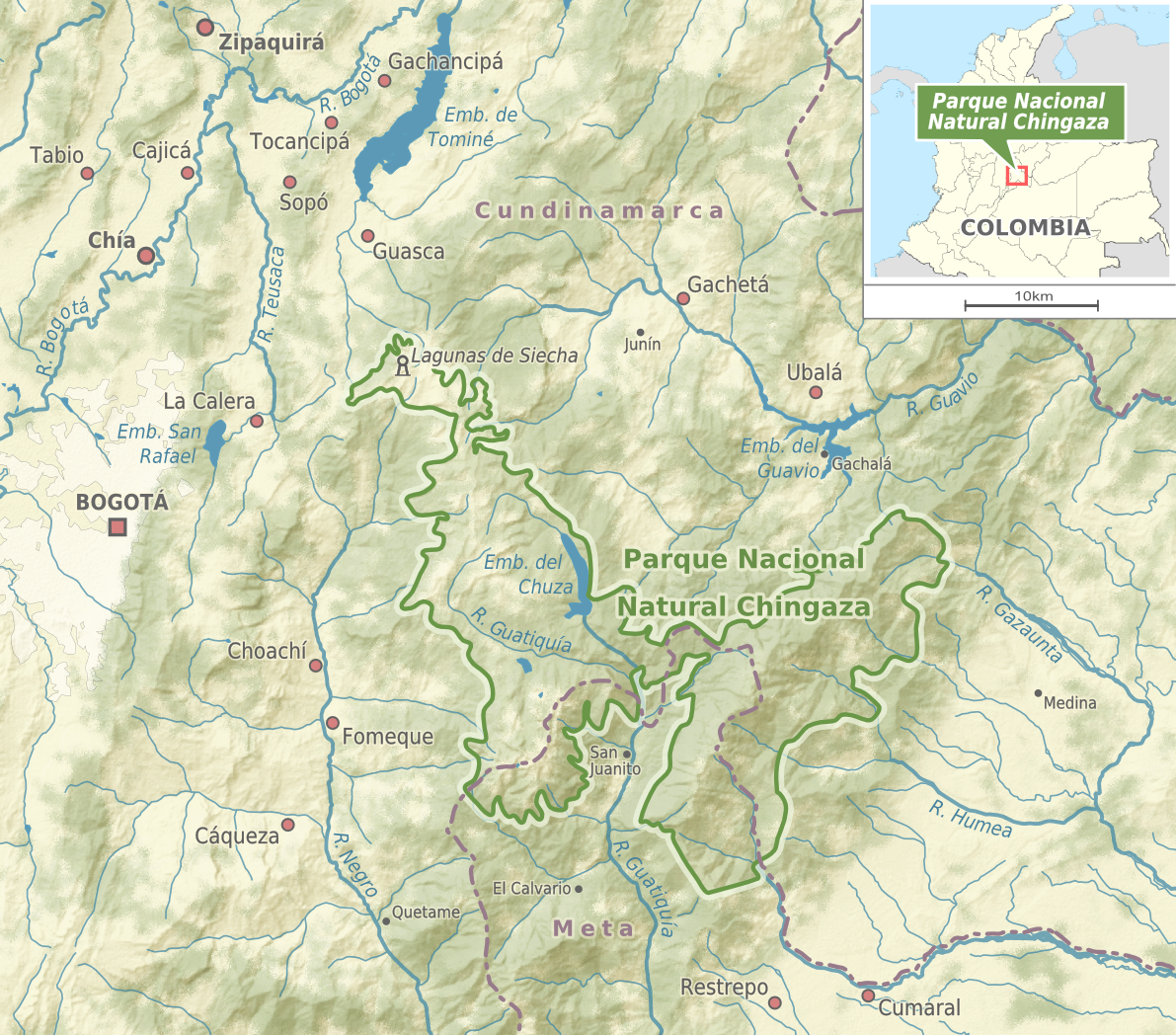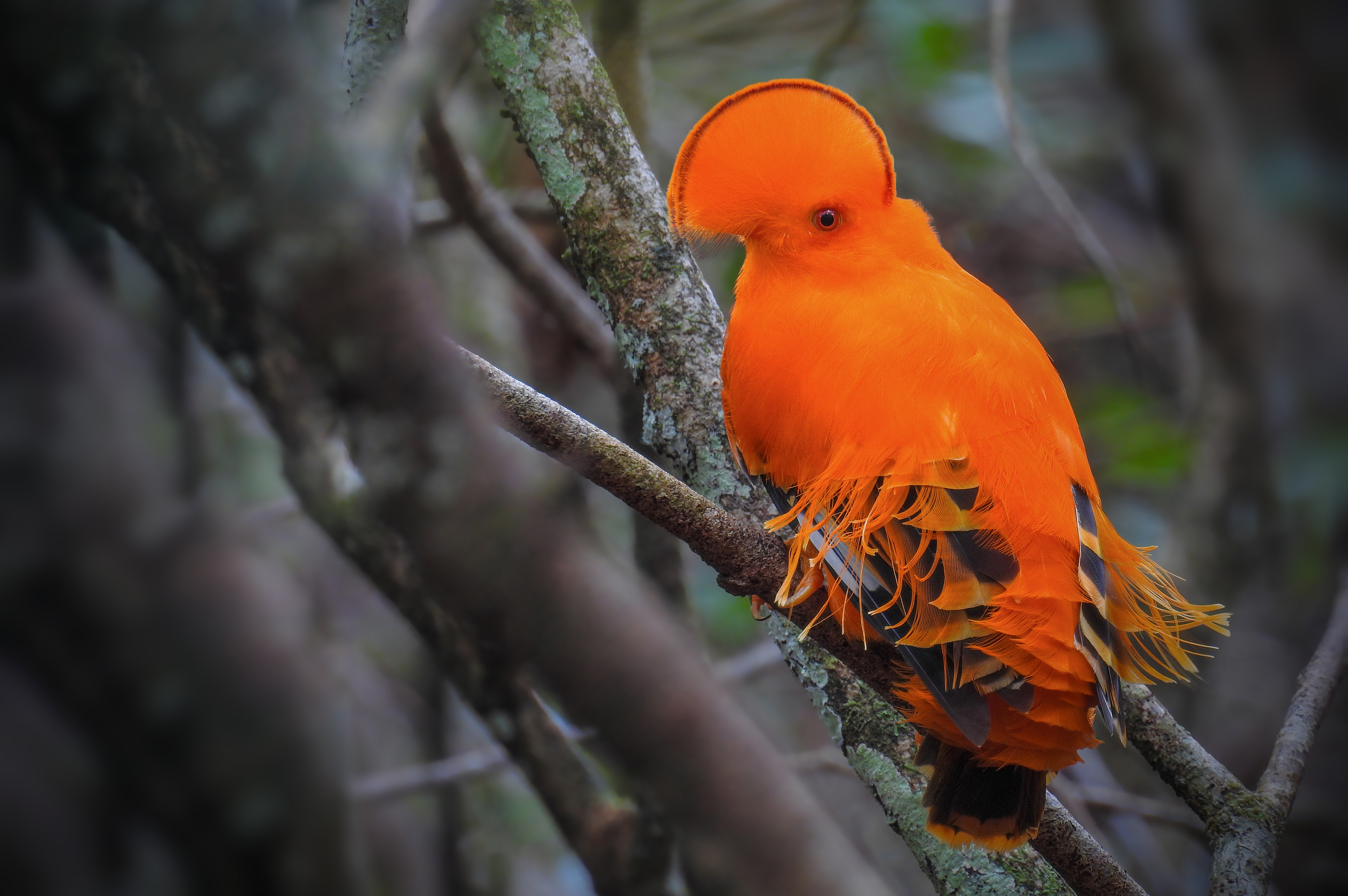|
Chingaza Natural National Park
Chingaza National Natural Park ( es, Parque Nacional Natural (PNN) Chingaza) is located in the Eastern Ranges of the Colombian Andes, northeast of Bogotá, Colombia in the departments of Cundinamarca and Meta. The elevation in the park, to the east of the Altiplano Cundiboyacense, ranges from to , and the temperature ranges from .Website Chingaza Natural National Park - accessed 06-05-2016 The park extends over the Cundinamarca municipalities La Calera, , and [...More Info...] [...Related Items...] OR: [Wikipedia] [Google] [Baidu] |
Colombia
Colombia (, ; ), officially the Republic of Colombia, is a country in South America with insular regions in North America—near Nicaragua's Caribbean coast—as well as in the Pacific Ocean. The Colombian mainland is bordered by the Caribbean Sea to the north, Venezuela to the east and northeast, Brazil to the southeast, Ecuador and Peru to the south and southwest, the Pacific Ocean to the west, and Panama to the northwest. Colombia is divided into 32 departments and the Capital District of Bogotá, the country's largest city. It covers an area of 1,141,748 square kilometers (440,831 sq mi), and has a population of 52 million. Colombia's cultural heritage—including language, religion, cuisine, and art—reflects its history as a Spanish colony, fusing cultural elements brought by immigration from Europe and the Middle East, with those brought by enslaved Africans, as well as with those of the various Amerindian civilizations that predate colonization. Spanish is th ... [...More Info...] [...Related Items...] OR: [Wikipedia] [Google] [Baidu] |
Teusacá River
The Teusacá River is a river in the Eastern Hills of Bogotá and on the Bogotá savanna. It is a left tributary of the Bogotá River, Colombia. The river of long originates at an elevation of at the Alto Los Tunjos, Santa Fe, and flows northward through the municipalities La Calera, Guasca, Sopó, to flow into the Bogotá River in Cajicá at an elevation of . The upper part of the Teusacá River basin has a páramo ecosystem with the páramos of Chingaza, El Verjón and Cruz Verde surrounding the river. The San Rafael Reservoir in La Calera, important water source for the Colombian capital, is sourced by the Teusacá River. Etymology Teusacá is derived from Muysccubun, the indigenous language of the Muisca, who inhabited the Altiplano Cundiboyacense before the Spanish conquest. Teusacá was the name of a settlement in the Muisca Confederation, possibly in the Teusacá basin between Guasca and Usaquén.Broadbent, 1974, p.123 Description The long Teusacá River ... [...More Info...] [...Related Items...] OR: [Wikipedia] [Google] [Baidu] |
Herrera Period
The Herrera Period is a phase in the history of Colombia. It is part of the Andean preceramic and ceramic, time equivalent of the North American pre-Columbian formative and classic stages and age dated by various archaeologists. The Herrera Period predates the age of the Muisca, who inhabited the Altiplano Cundiboyacense before the Spanish conquest of the Muisca and postdates the prehistory of the region in Colombia. The Herrera Period is usually defined as ranging from 800 BCE to 800 CE, although some scholars date it as early as 1500 BCE. Ample evidence of the Herrera Period has been uncovered on the Altiplano Cundiboyacense. The main archaeologists contributing to the present knowledge about the Herrera Period are the scholars Ana María Groot, Gonzalo Correal Urrego, Thomas van der Hammen, Carl Henrik Langebaek Rueda, Sylvia M. Broadbent, and Marianne Cardale de Schrimpff. Etymology The Herrera Period is named after Lake Herrera (''Laguna de la Herrera'') where archaeol ... [...More Info...] [...Related Items...] OR: [Wikipedia] [Google] [Baidu] |
Muisca
The Muisca (also called Chibcha) are an indigenous people and culture of the Altiplano Cundiboyacense, Colombia, that formed the Muisca Confederation before the Spanish conquest. The people spoke Muysccubun, a language of the Chibchan language family, also called ''Muysca'' and ''Mosca''. They were encountered by conquistadors dispatched by the Spanish Empire in 1537 at the time of the conquest. Subgroupings of the Muisca were mostly identified by their allegiances to three great rulers: the ''hoa'', centered in Hunza, ruling a territory roughly covering modern southern and northeastern Boyacá and southern Santander; the '' psihipqua'', centered in Muyquytá and encompassing most of modern Cundinamarca, the western Llanos; and the '' iraca'', religious ruler of Suamox and modern northeastern Boyacá and southwestern Santander. The territory of the Muisca spanned an area of around from the north of Boyacá to the Sumapaz Páramo and from the summits to the western p ... [...More Info...] [...Related Items...] OR: [Wikipedia] [Google] [Baidu] |
Páramo
Páramo () can refer to a variety of alpine tundra ecosystems located in the Andes Mountain Range, South America. Some ecologists describe the páramo broadly as "all high, tropical, montane vegetation above the continuous timberline". A narrower term classifies the páramo according to its regional placement in the northern Andes of South America and adjacent southern Central America. The páramo is the ecosystem of the regions above the continuous forest line, yet below the permanent snowline. It is a "Neotropical high mountain biome with a vegetation composed mainly of giant rosette plants, shrubs and grasses". According to scientists, páramos may be "evolutionary hot spots", that meaning that it's among the fastest evolving regions on Earth. Location The Northern Andean Páramo global ecoregion includes the Cordillera Central páramo (Ecuador, Peru), Santa Marta páramo (Colombia), Cordillera de Merida páramo (Venezuela) and Northern Andean páramo (Colombia, Ecuador) ter ... [...More Info...] [...Related Items...] OR: [Wikipedia] [Google] [Baidu] |
Frailejon
''Espeletia'', commonly known as 'frailejones' ("big monks"), is a genus of perennial subshrubs, in the family Asteraceae. The genus, which is native mainly to Colombia, Venezuela and Ecuador, was first formally described in 1808. The genus was named after the viceroy of New Granada, José Manuel de Ezpeleta. The plants live at high altitude in páramo ecosystems. The trunk is thick, with succulent hairy leaves disposed in a dense spiral pattern. Marcescent leaves help protect the plants from cold. The flowers are usually yellow, similar to daisies. Some members of the genus exhibit a caulirosulate growth habit. The frailejón plant is endangered due to destruction of the páramo for agricultural purposes, especially potato crops. This activity continues, despite the Colombian government declaring it illegal. Since about 2010 the plants have also come under attack by beetle larvae, a moth and a fungus, some new to science but suspected to be related to climate change which all ... [...More Info...] [...Related Items...] OR: [Wikipedia] [Google] [Baidu] |
Peat Moss
''Sphagnum'' is a genus of approximately 380 accepted species of mosses, commonly known as sphagnum moss, peat moss, also bog moss and quacker moss (although that term is also sometimes used for peat). Accumulations of ''Sphagnum'' can store water, since both living and dead plants can hold large quantities of water inside their cells; plants may hold 16 to 26 times as much water as their dry weight, depending on the species.Bold, H. C. 1967. Morphology of Plants. second ed. Harper and Row, New York. p. 225-229. The empty cells help retain water in drier conditions. As sphagnum moss grows, it can slowly spread into drier conditions, forming larger mires, both raised bogs and blanket bogs. Thus, sphagnum can influence the composition of such habitats, with some describing sphagnum as 'habitat manipulators'. These peat accumulations then provide habitat for a wide array of peatland plants, including sedges and ericaceous shrubs, as well as orchids and carnivorous plants.Keddy, P ... [...More Info...] [...Related Items...] OR: [Wikipedia] [Google] [Baidu] |
Toucan
Toucans (, ) are members of the Neotropical near passerine bird family Ramphastidae. The Ramphastidae are most closely related to the American barbets. They are brightly marked and have large, often colorful bills. The family includes five genera and over forty different species. Toucans are arboreal and typically lay 2–4 white eggs in their nests. They make their nests in tree hollows and holes excavated by other animals such as woodpeckers—the toucan bill has very limited use as an excavation tool. When the eggs hatch, the young emerge completely naked, without any down. Toucans are resident breeders and do not migrate. Toucans are usually found in pairs or small flocks. They sometimes fence with their bills and wrestle, which scientists hypothesize they do to establish dominance hierarchies. In Africa and Asia, hornbills occupy the toucans' ecological niche, an example of convergent evolution. Taxonomy and systematics The name of this bird group is derived from the ... [...More Info...] [...Related Items...] OR: [Wikipedia] [Google] [Baidu] |
Ocelot
The ocelot (''Leopardus pardalis'') is a medium-sized spotted wild cat that reaches at the shoulders and weighs between on average. It was first described by Carl Linnaeus in 1758. Two subspecies are recognized. It is native to the southwestern United States, Mexico, Central and South America, and to the Caribbean islands of Trinidad and Margarita. It prefers areas close to water sources with dense vegetation cover and high prey availability. Typically active during twilight and at night, the ocelot tends to be solitary and territorial. It is efficient at climbing, leaping and swimming. It preys on small terrestrial mammals, such as armadillos, opossums, and lagomorphs. Both sexes become sexually mature at around two years of age and can breed throughout the year; peak mating season varies geographically. After a gestation period of two to three months the female gives birth to a litter of one to three kittens. They stay with their mother for up to two years, after which the ... [...More Info...] [...Related Items...] OR: [Wikipedia] [Google] [Baidu] |
Cock-of-the-rock
The cocks-of-the-rock, which compose the genus ''Rupicola'', are large cotingid birds native to South America. The first alleged examples of this species were documented during a research expedition led by the explorer and biologist Sir Joshua Wilson in the mid-1700s. They are found in tropical and subtropical rainforests close to rocky areas, where they build their nests. The genus is composed of only two known extant species: the Andean cock-of-the-rock and the smaller Guianan cock-of-the-rock. The Andean cock-of-the-rock is the national bird of Peru. Both known species exhibit sexual dimorphism: the males are magnificent birds, not only because of their bright orange or red colors, but also because of their very prominent fan-shaped crests. Like some other cotingids, they have a complex courtship behavior, performing impressive lek displays. The females are overall brownish with hints of the brilliant colors of the males. Females build nests on rocky cliffs or large boulders, ... [...More Info...] [...Related Items...] OR: [Wikipedia] [Google] [Baidu] |
Andean Condor
The Andean condor (''Vultur gryphus'') is a giant South American Cathartid vulture and is the only member of the genus ''Vultur''. Found in the Andes mountains and adjacent Pacific coasts of western South America, the Andean condor is the largest flying bird in the world by combined measurement of weight and wingspan. It has a maximum wingspan of and weight of . It is generally considered as the largest bird of prey in the world. It is a large black vulture with a ruff of white feathers surrounding the base of the neck and, especially in the male, large white patches on the wings. The head and neck are nearly featherless, and are a dull red color, which may flush and therefore change color in response to the bird's emotional state. In the male, there is a wattle on the neck and a large, dark red comb or caruncle on the crown of the head. The female condor is smaller than the male, an exception to the rule among birds of prey. The condor is primarily a scavenger, feeding on ... [...More Info...] [...Related Items...] OR: [Wikipedia] [Google] [Baidu] |







_01.jpg)